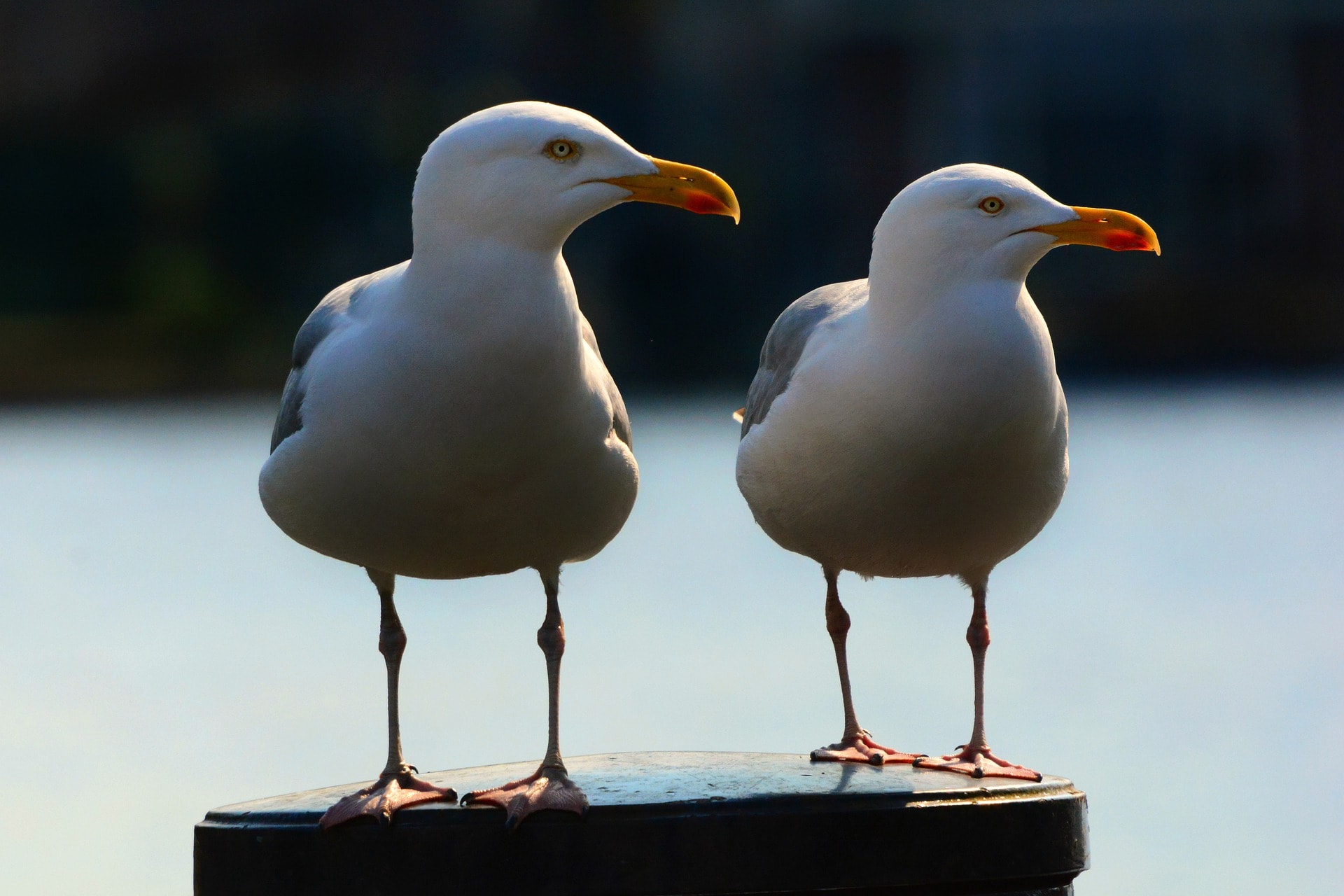Gulls have a bit of a reputation problem. Often referred to as “sky-rats” by their many detractors, it’s not too hard to see why the gull is so very maligned. Seagulls are loud and raucous, bold to the point of audacity, messy as can be, and often lead a life of crime and petty theft. Despite all of this, though, what would an ocean vista be without the distinctive calling of gulls? Who could truly say that they would prefer a sunset over the shore without a single gull silhouetted on the horizon? Gulls are the lovable scamps of the avian kingdom. Their wily trouble-making behavior just gives us more reasons to love them!
Are seagulls simply ne’er-do-wells that spend their days squabbling for their next meal? Spend an hour or two on a crowded beach and you could be forgiven for thinking so. Observe them for a bit longer, though, and you may come to appreciate the cleverness that seagulls exhibit. Gulls, like pigeons other so-called “nuisance animals,” hold up a mirror to humanity. They show us that we cannot completely tame nature without expecting a bit of pushback. They demonstrate that, though we are certainly the most intelligent animals around, our competition will always be there to snatch our potato chips away the moment that we let down our guard.
If the seagull is a guiding force in your life, then allow the unique pluck, determination, and wit of the seagull to inspire you. Read on to learn all about the role of the seagull in symbolism, mythology, dreams, and as a spirit or totem animal!
Seagull Symbolism and Meaning
The seagull in many cases symbolizes negative traits such as gluttony, thievery, gossip, crowd-mentality, and dirtiness. There is much more to the misunderstood seagull, though!
Gulls are devoted parents. These birds defend their young with incredible ferocity. Additionally, both gull parents participate actively in rearing their brood. So, gulls can represent family, parenthood, and protection.
Additionally, seagulls deserve a great deal of recognition for their incredible adaptability. They are impressively resourceful and make the best out of almost any circumstance. Despite the damage that humanity has caused to the ecosystems of beaches and shorelines, seagulls continue to stubbornly persevere.
Seagulls may also represent navigation. In this sense, gulls can be connected with finding the right path, or finding one’s own way home, no matter what the conditions are like.
Seagull Native American Symbolism
In Native American traditions, seagulls represent wisdom and trickery. In some traditions, the gull is a wise grandmother who uses her cunning to protect the helpless.
One Native American tradition uses the seagull to demonstrate the consequences of complaining. This legend states that seagulls squawk and complain even when they are fed, so fishermen no longer bother to feed them.
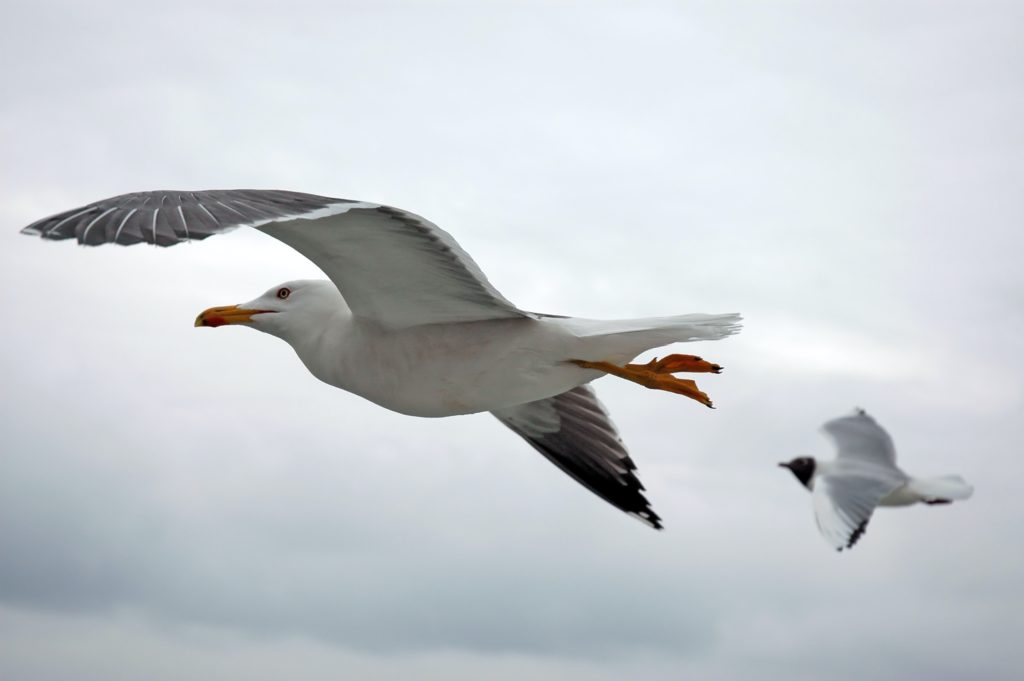
Seagull Christianity Symbolism
In Deuteronomy, seagulls are listed among the unclean animals which man should not eat. Because of this, and their reputations for thieving and bickering, gulls are often connected with impurity.
For many Christians who appreciate seagulls, however, they represent the beauty and balance of God’s creation.
Seagull Celtic Symbolism
In Celtic traditions, gulls are often connected with the sea and with storms. The Irish god of the sea and the afterlife, Manannan Mac Lir, is often connected with seagulls.
Seagull in Dreams
If you’ve been having dreams about seagulls, you may wonder what the meaning of such dreams might be. Seagulls in dreams have a diverse range of meanings depending on the context involved.
Dreaming of a seagull before a journey indicates that a danger might arise, but that the gull is safeguarding your journey. The seagull is a sign that you are protected against storms.
Similarly, dreaming of a seagull before facing a big decision indicates a dangerous outcome. Since the seagull can weather any storm, though, the gull is a sign to trust your instincts, prepare for the worst, and know that you will be okay.
Dreaming of a group of seagulls can be a sign that you feel overlooked or disrespected by your social group. Seagulls are very attentive within their families, but they can be very competitive and hostile with one another. This dream can be a sign to seek better company.
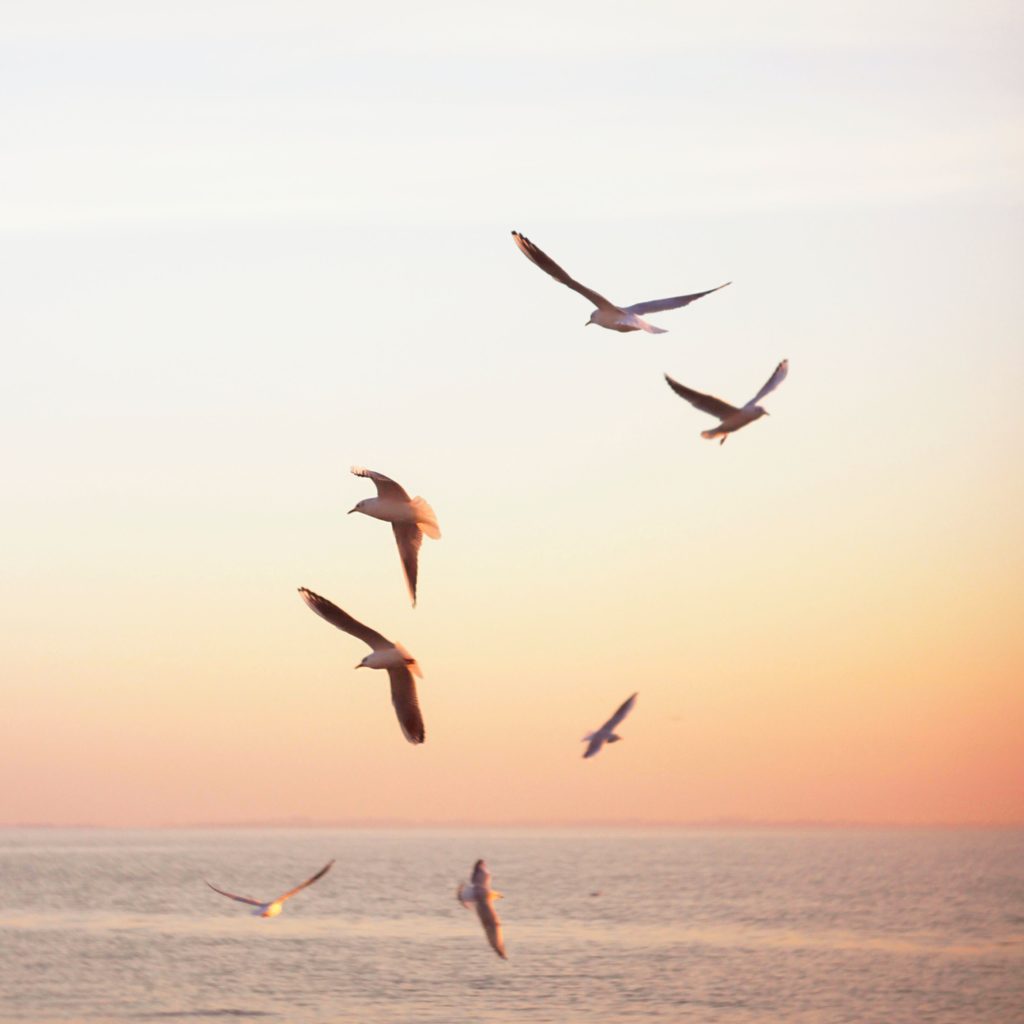
Finally, dreaming of a nesting seagull is a sign that the time has come to settle down. This dream may be a message that your wandering spirit is yearning for an emotional equilibrium. Seek out stable relationships and stable living situations in order to nourish your spirit.
Seagull Encounters and Omens
Encountering a seagull can be a meaningful experience in which you connect with nature through a wild creature, or it can be a chaotic instance wherein one of nature’s lovely creatures steals a snack from your hand! In any case, seagull encounters are often considered to be good luck.
Getting pooped on by a seagull is considered to be incredibly lucky. Perhaps this icky circumstance is meant to use up all of your bad luck in one go.
Encountering a seagull when you are far from a body of water is a sign that you are lost. Seek out your roots in order to determine the correct path
Finally, a seagull encounter can be a sign that you are feeling misunderstood. Look to the unabashedly loud communication style of the gull as a sign to express yourself freely.
Seagull in Mythology & Folklore
Seagulls are present in a number of culture’s mythological traditions. Predictably, they are most often associated with the sea.
Native American Mythology:
In the Native American Innu tradition, the gull is a wise grandmother who looks out for those who are lost. One story about this grandmother seagull character explains how she saved two young bear cubs from danger. The bear cubs were out eating berries one day when they heard their mother cry out. Their mother had been killed and the beast responsible was still hungry.
Fearing for their lives, the cubs ran to grandmother porcupine. Grandmother porcupine told them to find grandmother seagull while she stalled the beast. Grandmother porcupine slowed the monster down by sticking him with her spines. By the time the monster caught up to them, the bear cubs had crossed the river in grandmother seagull’s boat.
Grandmother seagull then filled the boat with fish guts. When the monster tried to ride in her boat to reach the cubs, he could not stand the smell. The monster hung his head over the side of the boat and grandmother seagull seized her opportunity and chopped it off. From then on, the bear cubs lived in safety with grandmother seagull.
Celtic Mythology:
One bizarre piece of Scottish folklore involves the fearsome cryptid known as the “Boobrie.” The Boobrie is said to be a gigantic bird with the ability to shapeshift. Sighted mostly around Scotland’s many Lochs, the Boobrie is usually interpreted as some form of sea bird. This is especially fitting due to its apparent gluttony. The Boobrie is said to prey on livestock much larger than any bird should be able to handle. Many believe the culprit for the Boobrie legend to be the extinct Great Auk, however the Boobrie’s description and traits are fitting of an oversized seagull.
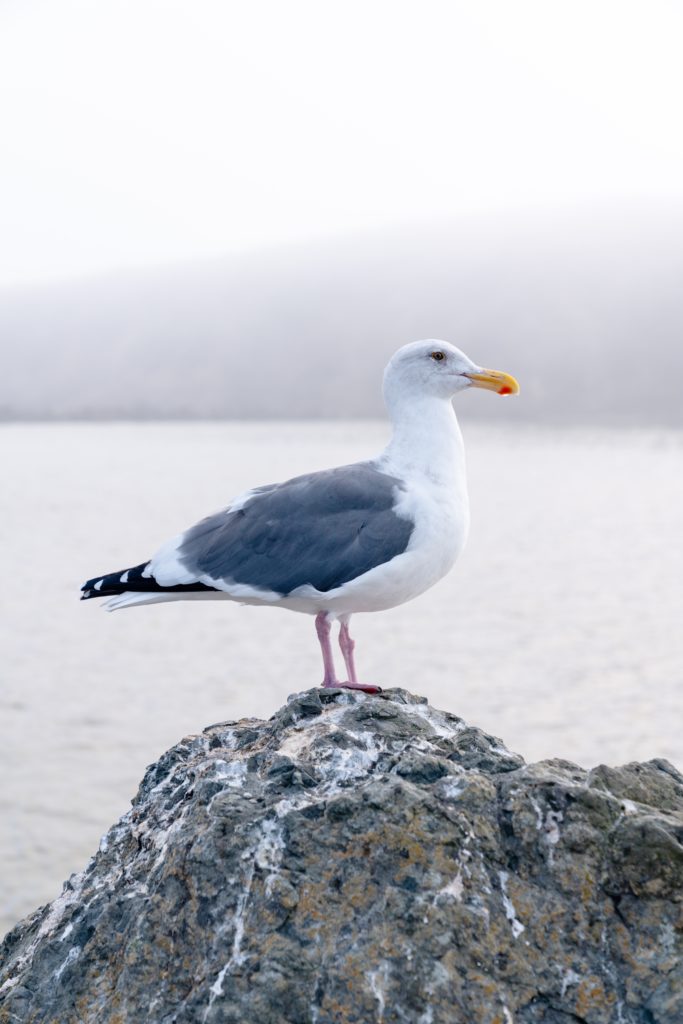
Japanese Mythology:
Seagulls in Japanese Shinto traditions are sometimes considered to be messengers of the different sea gods.
On Kabushima Island in Japan, there is a shrine that is thought to bring wealth and prosperity. This island is also a breeding ground for the Black-tailed Gull. In Japan, these gulls are called “umineko.” “Neko” means “cat.” The seagulls are called this for their cat-like cries.
Greek Mythology:
In Homer’s Odyssey, the goddess Leucothea is connected with gulls and sea birds. Leucothea was once a human woman named Ino. Ino and her husband Althamas had two sons, Learchus and Melicertes. They also acted as foster parents for the god Zeus’s illegitimate son, Dionysus.
Hera, Zeus’s wife, was so filled with rage at Dionysus’s conception that she resolved to punish Ino and Althamas for harboring the infant god. She did so by poisoning Althamas so that he would be possessed by murderous insanity. In this state, Althamas murdered his young son Learchus. Grief-stricken, Ino fled with her remaining son and lept into the sea.
She begged the gods and deities of the sea to accept her and her son amongst them. They did so, renaming Ino as Leucothea and her son Melicertes as Palaemon. As Leucothea, Ino became a benevolent minor goddess who acted as a guardian spirit to sailors and any who found themselves lost at sea. She assists the hero of the Odyssey, Odysseus, by flying to his aid like a seagull.
Although more often connected with kingfishers, the Greek myth of Halcyon and the “Halcyon days” are also connected to seagulls. In this story, Halcyon was the daughter of the god of the winds. She was married to a human man named Ceyx. Halcyon and Ceyx were so in love that even the gods watched their love story closely.
This meant that when Halcyon and Ceyx made a private joke about the gods, they overheard and grew angry. Because of this overheard joke, Ceyx was doomed to die on his next voyage at sea. Although Halcyon begged him to avoid sailing, Ceyx made the ill-fated journey anyways.
Unfortunately, Ceyx could not escape his fate. When Halcyon found his body on the shore she leapt into the sea in her grief. In an act of remorse for Halcyon’s anguish, the gods transformed her and Ceyx into sea birds so that they could be together. Unfortunately, though they were together, Halcyon and Ceyx’s nests kept getting battered by waves and their offspring lost.
Pitying them, Zeus declared that there would be fourteen days of clear still weather each year. These would be the “Halcyon days“; the days during which Halcyon could safely lay her eggs and raise her young. Halcyon means “kingfisher” in Greek, but kingfishers are more typically found alongside rivers and lakes than out at sea. Halcyon’s story makes more sense if she is thought of as a gull or a similar sea bird.
Seagull Spirit Animal
If the seagull is your spirit animal then you are most likely an extroverted individual who wears their emotions on their sleeve. The seagull is intelligent and clever, but it does not filter itself or hold back at all. People with the seagull as their spirit animal are often impulsive and emotional.
If the seagull is your spirit animal then it is likely that you are gregarious and social. Be aware of the friends that you surround yourself with, though. The gull spirit animal is easily influenced by its peers. Do not allow yourself to adopt the habits of those who would call themselves your “friends.”
Seagull Totem Animal
The seagull totem animal is associated with parenthood and guidance. If the seagull is your totem animal then it is likely that your calling involves teaching or guiding the futures of others. People with the gull as their totem animal are often drawn towards parenthood.
Additionally, the seagull totem animal relates to wisdom, experience, and mentorship. People with this totem animal learn from their mistakes and take pride in helping others to avoid making the same ones.
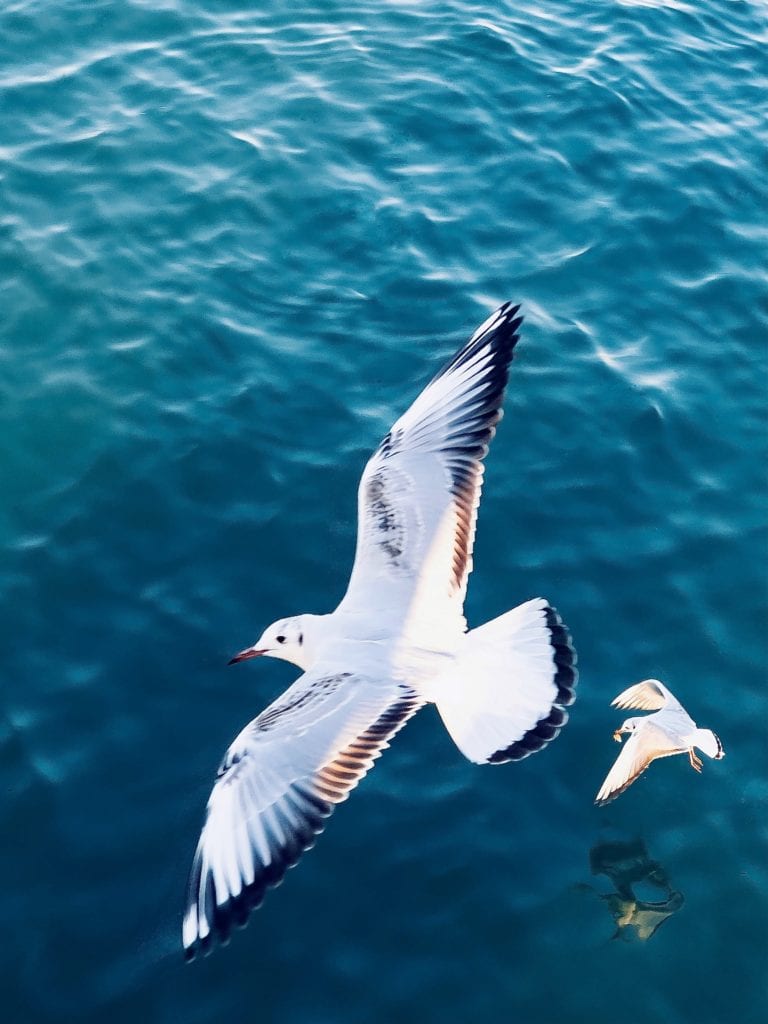
Seagull Power Animal
As a power animal, the seagull helps those who invoke it to survive through crises. The gull power animal represents resilience and endurance. If your power animal is the seagull, it is likely that your life has been rife with challenges. Fortunately, though, the seagull power animal embodies the ability to navigate through storms and become strong through challenges.
People who rely on this power animal can be certain that they will make mistakes and be blown off course, however the seagull power animal insists that there is no better way to learn than that.
Seagull Tattoo Meaning
A seagull tattoo may represent a difficult time in a person’s life through which they held steady and used their personal fortitude to get through to the other side.
A seagull tattoo may also represent a person who feels misunderstood or rejected by others.
Conclusion
Seagulls are the targets of a great deal of spite. Even so, these birds have an impressive amount of wisdom to share with us. They are fighters. Seagulls use their clever brains and their bold self-assuredness to conquer any obstacle in their path. Although many people see gulls as “dirty” or “ugly,” I think that gulls are beautiful.
Gulls are the oceans delinquent children. They bicker and steal and raise hell along the shores, and yet the beauty of the beach would be hollow without their ringing cries. Seagulls remind us that nature will always be wild, even when we would prefer placidity.

